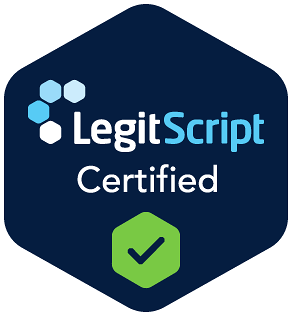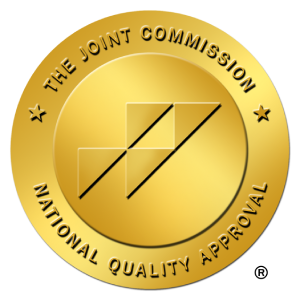Breaking food addiction requires a strategic approach focused on your brain’s reward system. You’ll need to remove ultra-processed trigger foods, prepare for 48-72 hours of withdrawal symptoms, and stock your kitchen with nutrient-dense alternatives. Plan structured meals rich in protein and fiber while maintaining consistent eating schedules. Support systems, including professional help and community groups, greatly improve your success rate. The science-backed methods that follow will guide your path to food freedom.
Understanding Food Addiction and Its Impact

Food addiction emerges as a complex neurobiological disorder that mirrors substance dependency in both brain response and behavioral patterns. When consuming highly palatable foods, your brain’s reward system releases dopamine, creating patterns similar to those seen in drug addiction. The neurological underpinnings of this condition involve altered brain circuits that affect decision-making and self-control. Research has shown that 12-step recovery programs can provide essential support for individuals struggling with food addiction. This disorder most frequently affects women aged 14-35 across all body types and weights.
Understanding these behavioral patterns is pivotal, as they manifest through compulsive overeating, loss of control around certain foods, and continued consumption despite negative consequences. Anticipation of certain foods can trigger food-seeking behaviors similar to those observed in substance use disorders. The condition’s impact extends beyond physical health, affecting daily functioning and emotional well-being.
Recent research indicates that genetic predisposition, combined with environmental triggers and emotional factors, can increase vulnerability to food addiction, making it a multifaceted disorder requiring extensive treatment approaches.
Signs You May Be Struggling With Food Addiction

While many people experience occasional food cravings, recognizing the signs of food addiction requires understanding specific behavioral patterns and psychological responses that go beyond normal eating habits. Your genetic makeup may make you more susceptible, as studies show that certain inherited genes increase addiction risk. You might be struggling with food addiction if you’re experiencing both emotional challenges and physiological consequences that profoundly impact your daily life.
You’ll continue eating certain foods even when you’re full, often to the point of physical discomfort, and you find it increasingly difficult to feel satisfied with normal portions. Research shows that highly processed foods are specifically engineered to override your body’s natural fullness signals.
You’re using food as your primary way to manage stress, anxiety, or depression, with the emotional relief becoming less effective over time. If you’re concerned about your relationship with food, you can take advantage of eating disorder screening to better understand your symptoms.
You’ve noticed yourself avoiding social situations, eating in secret, or experiencing relationship strain due to your eating habits, accompanied by intense feelings of shame or guilt.
The Science Behind Ultra-Processed Food Cravings

Your brain’s reward system responds powerfully to ultra-processed foods due to their engineered combination of refined carbohydrates, fats, and additives that trigger intense dopamine release.
Food manufacturers deliberately exploit these neurological vulnerabilities by designing products with ideal nutrient timing, mouthfeel, and flavor profiles that bypass your natural satiety signals. These products, whose marketing slogans like eat just one became iconic in the 1960s, often have limited access to alternatives in disadvantaged neighborhoods, making them the dominant food choice.
Understanding this deliberately engineered cycle of cravings and reward can help you recognize how ultra-processed foods create addiction-like patterns in your brain, making it harder to resist their appeal. As consumption continues over time, your brain requires larger food amounts to achieve the same pleasurable response, similar to how drug tolerance develops.
Brain Chemistry and Reward
Understanding brain chemistry reveals why ultra-processed foods (UPFs) can hijack your reward system much like addictive substances. When you consume UPFs, your brain’s striatum and prefrontal cortex activate intensely, triggering rapid dopamine release that reinforces overconsumption patterns. Numerous studies show that these neurological effects mirror those of nicotine and alcohol in key ways. Research indicates that binge eating disorder is closely linked to food addiction, affecting up to 50% of individuals with this condition.
Your brain’s response to UPFs becomes particularly powerful due to:
- Combined fat-sugar mixtures that create heightened reward responses, exceeding what you’d experience from single ingredients
- Rapid nutrient absorption that floods your system, accelerating dopamine depletion and creating stronger cravings
- Progressive neurotransmitter imbalance affecting your opioid, endocannabinoid, and serotonin systems, making it increasingly difficult to resist UPFs
This powerful neurological response explains why you might struggle to control UPF intake, even when you’re aware of their negative health impacts. Your brain literally rewires itself to seek these foods compulsively.
Manufacturing Addiction by Design
Modern food manufacturers deliberately engineer ultra-processed foods to optimize their addictive potential through precise combinations of ingredients, textures, and flavors that override natural satiety signals.
Through addictive ingredient engineering, they create products with rapid-digesting carbohydrates and processed fats that trigger immediate reward responses. Manufacturing flavor optimization further amplifies this effect by incorporating specialized additives that perfect taste, texture, and mouthfeel.
You’ll find these foods designed with synergistic nutrient combinations that magnify their impact on your brain’s reward system. The strategic use of high glycemic ingredients creates blood sugar spikes and crashes, while engineered texture profiles and enhanced palatability drive compulsive consumption.
This calculated approach makes ultra-processed foods considerably more challenging to resist than whole, natural alternatives, as they’re specifically crafted to exploit your body’s natural reward mechanisms.
Breaking the Dopamine Loop
The powerful dopamine response triggered by ultra-processed foods (UPFs) creates a challenging cycle of addiction that mirrors substance dependence. When you consume UPFs, their engineered combination of fats and sugars floods your brain’s reward centers, disrupting normal dopamine metabolism and creating intense cravings that override natural satiety signals. Research reveals that approximately 14% of adults struggle with UPF addiction, highlighting the widespread nature of this health challenge.
You can break this cycle by understanding how UPFs manipulate your brain’s reward system:
- UPFs spike dopamine release more intensely than whole foods, leading to tolerance and requiring larger portions for satisfaction
- The rapid nutrient absorption from UPFs creates an artificial pleasure response that disrupts your natural nutrient balance
- Your brain develops neuroadaptive changes that prioritize UPF rewards over healthier food choices, similar to drug addiction
Understanding these mechanisms empowers you to make informed choices and regain control over your eating habits.
Essential Steps for Beginning Your Food Detox
Start your food detox by removing trigger foods from your kitchen and replacing them with nutrient-dense alternatives like fresh produce, lean proteins, and whole grains.
You’ll likely experience withdrawal symptoms in the initial 48-72 hours, including headaches, irritability, and intense cravings, as your body adjusts to fewer processed foods and refined sugars. Research shows that abstinence-based approaches are not effective for developing a healthy relationship with food. Research suggests that unprocessed natural foods are significantly less addictive than their processed counterparts.
Keep healthy emergency snacks readily available and maintain a structured eating schedule to help manage these initial challenges while your brain chemistry rebalances. Since food addiction affects the same reward centers of the brain as drug addiction, this structured approach helps regulate dopamine levels naturally.
Prepare Your Kitchen Space
Preparing your kitchen space serves as a critical foundation for successfully breaking food addiction through detox. Through kitchen layout optimization and culinary therapy integration, you’ll create an environment that supports your recovery expedition while minimizing triggers and temptations. Your space should nurture healthy habits and make nutritious choices effortless.
Start by purging trigger foods and organizing your kitchen into designated zones including a protein station, fiber-rich area, and hydration station. This strategic layout promotes mindful eating habits.
Invest in essential tools like food processors, steamer baskets, and portion control equipment. These items simplify the preparation of nutrient dense meals.
Replace traditional cooking equipment with healthier alternatives, such as non-stick pans instead of deep fryers, and stock your space with whole, unprocessed ingredients that support your detox goals.
Managing Early Withdrawal Symptoms
Once your kitchen space is optimized, you’ll face your next challenge: withdrawal symptoms. These typically peak within 24-48 hours and can include headaches, fatigue, and intense cravings for high-palatability foods. The acute phase lasts 7-10 days, followed by a milder 2-3 week protracted phase.
Combat these symptoms by staying hydrated and maintaining balanced meals rich in protein and fiber. Implement mindful relaxation techniques like deep breathing or meditation to manage emotional distress and support natural sleep patterns.
When cravings hit, use the 10-minute delay strategy and engage in physical activity like walking. Track your triggers in a journal and consider joining support groups for accountability. Remember, while withdrawal can be challenging, most severe symptoms typically subside within two weeks.
Managing Withdrawal Symptoms Successfully
Three key principles undergird successful withdrawal management when breaking free from food addiction: tracking symptoms, implementing coping strategies, and maintaining consistent support.
By tracking emotional triggers and documenting your physical responses, you’ll better understand your unique withdrawal patterns. Focus on disrupting habitual patterns through mindful eating and strategic food substitutions. Your withdrawal symptoms typically peak within 24-72 hours, so having a solid support system is indispensable during this period.
Document your symptoms daily, including cravings, headaches, and mood changes. Replace trigger foods gradually with nutrient-dense alternatives while practicing mindful eating techniques. Connect with support groups or professionals who can guide you through intense withdrawal periods and validate your experiences.
Building a Sustainable Meal Plan for Recovery
Building a sustainable meal plan starts by mapping out structured, nutrient-dense meals that align with food addiction recovery principles. You’ll need to focus on portion control with precise measurements: 4 oz of protein, 1 cup of grains, and 2 cups of vegetables per meal. Balance your macronutrients by combining lean proteins, complex carbs, and healthy fats at each sitting.
Prepare your recovery-friendly meals by batch cooking vegetables and proteins in advance. You’ll want to amplify flavors using spices like cinnamon and herbs instead of triggering ingredients. Track your meals to identify patterns and refine your approach. Remember to maintain nutrient density by incorporating broth, low-fat dairy, and non-tropical fruits within your daily allowance. Stay vigilant with labels to avoid hidden sugars and other addictive substances that could derail your progress.
Strategies for Preventing Relapse
Successful relapse prevention hinges on identifying personal triggers and developing substantial coping strategies. By monitoring early warning signs and maintaining a strong support network, you’ll be better equipped to navigate challenges during recovery. Building resilience against food addiction requires consistent vigilance and proactive planning.
Track your emotional states, behavioral patterns, and situational triggers in a daily journal to identify potential risk factors before they escalate
Strengthen your support network maintenance through regular therapy sessions, support group participation, and open communication with trusted family members
Create detailed contingency plans for high-risk situations, including specific action steps, emergency contacts, and alternative behaviors when faced with triggering environments
Remember to schedule regular check-ins with your healthcare providers to assess progress and adjust strategies as needed.
Physical and Mental Benefits of Food Detox
While shifting to a balanced, whole-food diet can feel challenging, the physical and mental rewards of food detox are substantial and well-documented. You’ll experience holistic health improvements across multiple systems, from augmented liver function to improved gut health and reduced inflammation.
Your metabolic regulation optimization will become evident through better glucose control, lowered blood pressure, and improved cholesterol levels. You’ll notice heightened body composition as you shed excess fat, while your energy levels increase and sleep quality improves. The mental benefits are comparably impressive – you’ll experience greater cognitive clarity, stable moods, and reduced food cravings.
The detox process supports your body’s natural ability to eliminate toxins while promoting nutrient absorption and hormone balance, leading to long-term resilience against chronic diseases and sustained wellness.
Support Systems and Professional Resources
Breaking free from food addiction becomes more achievable when you connect with the right support systems and professional resources. Research shows that combining professional treatment with community support dramatically improves recovery outcomes. While 44% find success through psychotherapy, your trek can benefit from both clinical expertise and peer support networks.
Access multiple support channels: Connect with healthcare providers (8% referral rate), join twelve-step programs (14% success rate), or engage with online communities for continuous encouragement.
Investigate government resources and legal protections: Many insurance plans now cover food addiction treatment under mental health parity laws.
Consider specialized treatment programs: Professional interventions averaging $11,808 annually offer structured support, especially beneficial for high-risk groups like women and LGBTQ+ individuals who show increased vulnerability to food addiction.
Long-Term Maintenance Tips for Food Freedom
Maintaining long-term freedom from food addiction requires consistent lifestyle adaptations backed by neuroscience and behavioral research. By implementing structured eating routines and managing dopamine triggers, you’ll build resilience against relapse. Start by establishing regular meal times and incorporating balanced nutrition patterns that include all macronutrients while avoiding ultra-processed foods.
Managing cravings becomes easier through food habituation strategies – gradually exposing yourself to trigger foods while building a neutral relationship with them. You’ll need to recognize high-palatability foods as potential triggers and develop alternative dopamine sources. Focus on creating sustainable routines that include meal planning, consistent eating schedules, and mindful food choices. These evidence-based approaches help rewire neural pathways, making it easier to maintain healthy eating patterns over time.
Frequently Asked Questions
Can I Still Eat Out at Restaurants During Food Addiction Recovery?
Yes, you can eat at restaurants during recovery by implementing effective meal planning strategies and mindful dining techniques.
You’ll want to research restaurants in advance, pre-select your meals, and stick to simple, unprocessed options. It’s helpful to dine with supportive companions and communicate your needs clearly to servers.
Remember to stay hydrated, eat slowly, and have a backup plan like healthy snacks if needed.
How Long Does It Typically Take to Reset Taste Preferences?
Your taste bud regeneration typically takes 10-14 days, but complete food preference adjustments can span 2-3 months. You’ll likely notice initial changes within the inaugural two weeks as your palate becomes more sensitive to natural flavors.
However, deeper neurological adaptations that reshape your food preferences take longer. Individual factors like your current diet, genetics, and consistency with dietary changes can influence this timeline. You’ll find healthy foods becoming increasingly appealing over time.
Should I Tell My Family and Friends About My Food Addiction?
Yes, telling trusted family and friends about your food addiction can be beneficial. Research shows that having a strong support system reduces isolation and increases recovery success, with 85% of individuals maintaining abstinence through structured support. While social stigma exists, private disclosure to loved ones can help them understand your needs and avoid enabling behaviors. They can assist with meal planning, identify triggering patterns, and provide accountability during your recovery [path].
What Exercise Routine Best Supports Food Addiction Recovery?
You’ll benefit most from a balanced exercise routine that combines cardio training and strength training. Start with 30 minutes of moderate cardio 3-4 times weekly to reduce withdrawal symptoms and manage cravings.
Add 2-3 strength training sessions to enhance mood and self-esteem. Don’t overdo it – moderation is key. Schedule workouts at consistent times and consider finding an exercise buddy for accountability.
Track your progress to stay motivated.
Are Food Addiction Treatment Costs Covered by Health Insurance?
Your insurance coverage options for food addiction treatment vary by policy, but many plans cover mental health and substance use disorder services under the Affordable Care Act.
You’ll typically find coverage for therapy, nutritional counseling, and medical supervision when deemed necessary.
If insurance coverage falls short, you can investigate community-based support programs, sliding-scale payment options, or assistance from non-profit organizations to help manage treatment costs.






